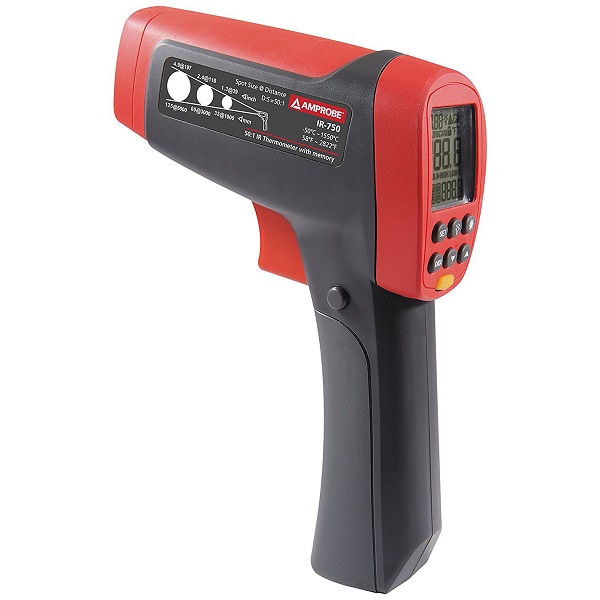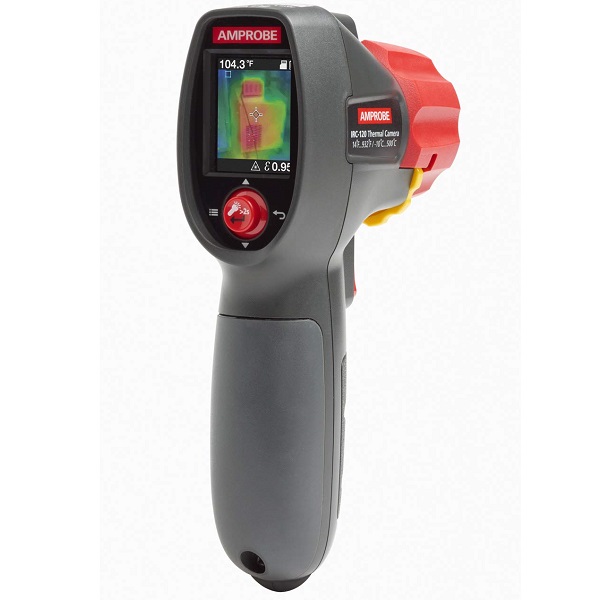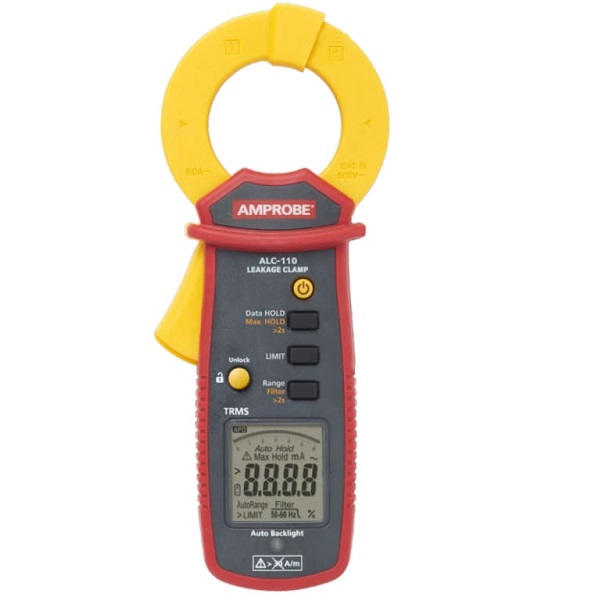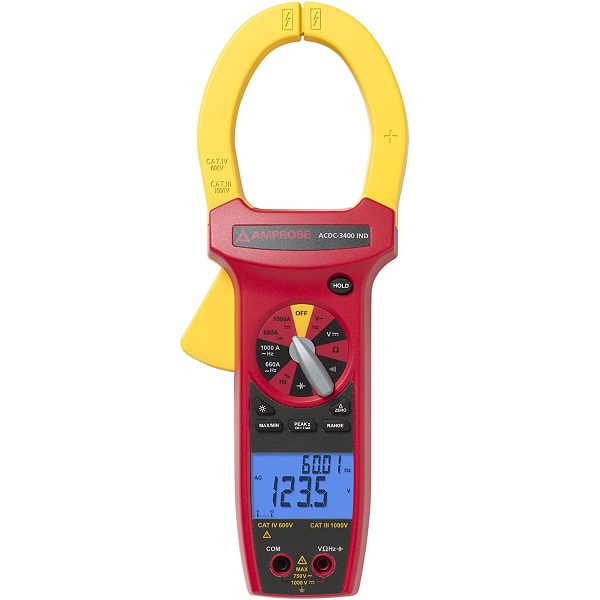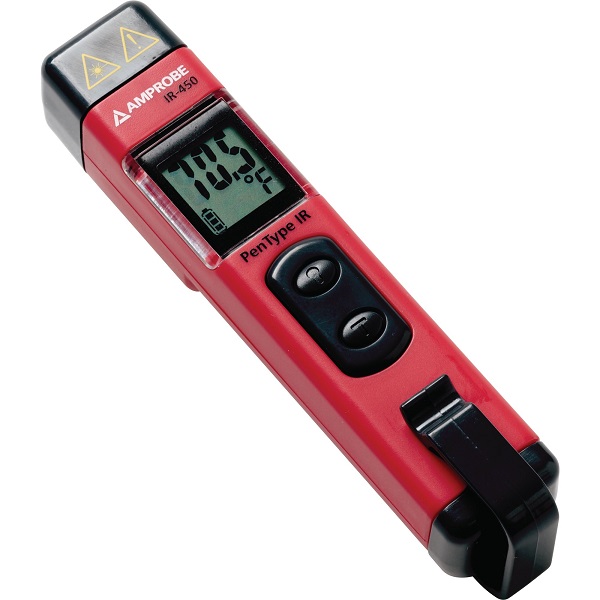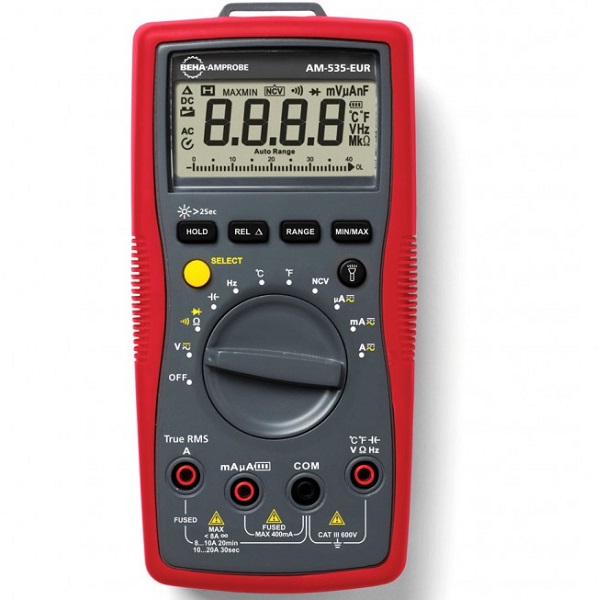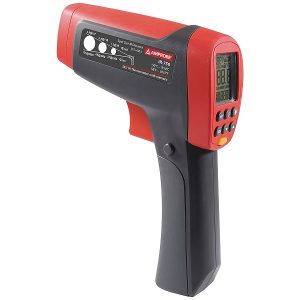| Content | | This versatile, easy-to-use digital multimeter is a great choice for homeowners or office maintenance staff. Use it to check for voltage in receptacles, extension cords, light fixtures, batteries, and other electrical circuits. Or check fuses, light bulbs, and continuity of electrical connections. You can even use it to verify the voltage level of automotive batteries and troubleshoot electrical problems in cars. With its user-friendly digital multimeter features like autoranging and a CAT III safety rating, the AM-500 will save time and increase measurement confidence. | The Amprobe IRC-120 thermal camera, designed for the professional, is rugged with point-and-shoot functionality to give you a visual heat map image for quick and accurate identification of temperature related issues. Troubleshoot electrical connections, motors, HVAC and electrical, and insulation leaks around buildings to identify potential energy savings. The IRC-120 joins the IRC-100 Series with some upgraded features: data storage, laser pointer, flashlight and UV light. | Prevent unplanned downtime by detecting leakage currents with the ALC-110 Leakage Current Clamp. Rated CAT III 600 V to ensure electrical safety, the ALC-110 is designed to resist external magnetic fields for highly accurate readings. Features TRMS, a mechanical jaw lock, max readings and hold functions, highest resolution of 0.001 mA (measure up to 60 A), broad frequency range (15 Hz to 1 kHz), selectable filters (low pass, appliance, no filter), selectable limits (0.25 mA, 0.5 mA, 3.5 mA, 10 mA, 12 mA) and a battery-saving design. | The Amprobe ACDC-3400 clamp multimeter is CAT IV rated to add an extra level of safety for high voltage, industrial or utility testing applications. It is an AC/DC current clamp meter and a voltage meter all in one. This clamp-on electrical multimeter includes True RMS sensing for accuracy and dependability and extra large jaws to clamp around conductors up to 2? (51 mm) in diameter.
| 3-in-1 Infrared Pocket Thermometer, Laser Pointer and Flashlight. A must have tool for everyday applications, the Amprobe IR-450 3-in-1 Infrared Pocket Thermometer, Laser Pointer, and Flashlight offers a uniquely small and convenient form factor with professional 8:1 distance to spot ratio, a high-quality laser pointer and LED flashlight. Much more portable than traditional infrared thermometers, the IR-450 Infrared Pocket Thermometer can be readily for quick diagnostic checks in a wide variety of applications including: HVAC/R, fire safety and protection, industrial maintenance, automotive and quality control. |
